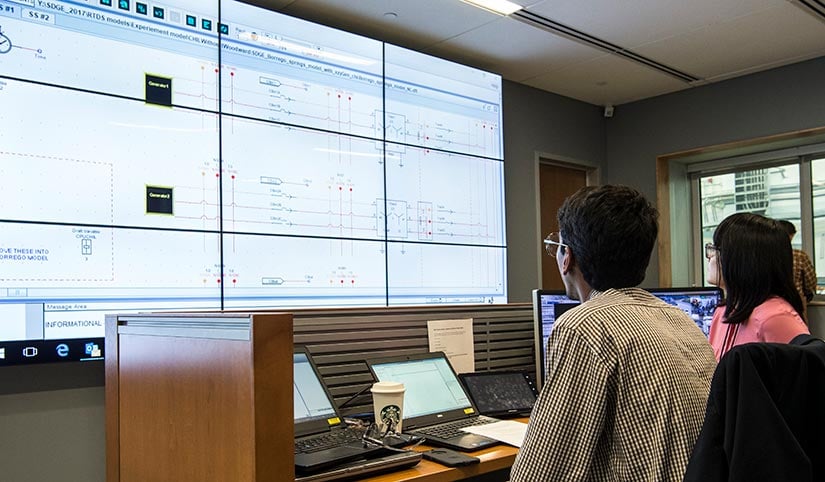Control Room of the Future
NLR is enhancing its Real-Time Analytics for Bulk Grid (RTAG) with artificial intelligence, machine learning, and digital twin technology to develop a virtual operator assistant for future control rooms.

RTAG is a control room operation simulator that mimics power system operations on a full Western Interconnect bulk energy system for reliability and resilience assessment under real-time and near-term planning horizons. RTAG simulates extreme large system events, high renewable penetration scenarios, and bulk energy system-natural gas interdependencies across steady-state, dynamic, and transient time domains.
RTAG-based artificial intelligence and machine learning will support next-generation control room functions. Deeper models will create unprecedented awareness in:
- Load forecasting
- Distributed energy resource management and virtual operator assistants
- System restoration from blackouts
- Predictive cascading analysis
- Collaborative and analytic visualization.
Capabilities
By integrating the commercial Dispatch Training Simulator (which replicates energy management system operations in control rooms) and production-grade Transient Security Assessment Tool with NLR-developed grid analytics, RTAG allows users to model chronological N-k/N-k-k contingencies in time-series simulation on the fly from North American Energy Resilience Model and other co-simulation data streams via the Hierarchical Engine for Large-Scale Infrastructure Co-Simulation (HELICS).
RTAG facilitates complex modeling and assessment of cybersecurity threats to control rooms and bulk energy system elements in the field. By using Dispatch Training Simulator in real-time, pre-defined, or pre-recorded long-term simulations, RTAG can emulate the loss of communication links in a control room and individual power plants and show the negative impacts of natural and intentional cyber threats to control room energy management system applications such as supervisory control and data acquisition, state estimation, and automatic generation control.
RTAG bridges real-time and historical energy management system data to automatically create or update chronological planning base cases from energy management system data sets and production cost models and resource mix forecast data. The RTAG platform and chronological base cases enable time-series co-simulation of transmission and distribution with distributed energy resource dynamics.
Contact
Share
Last Updated Dec. 6, 2025
